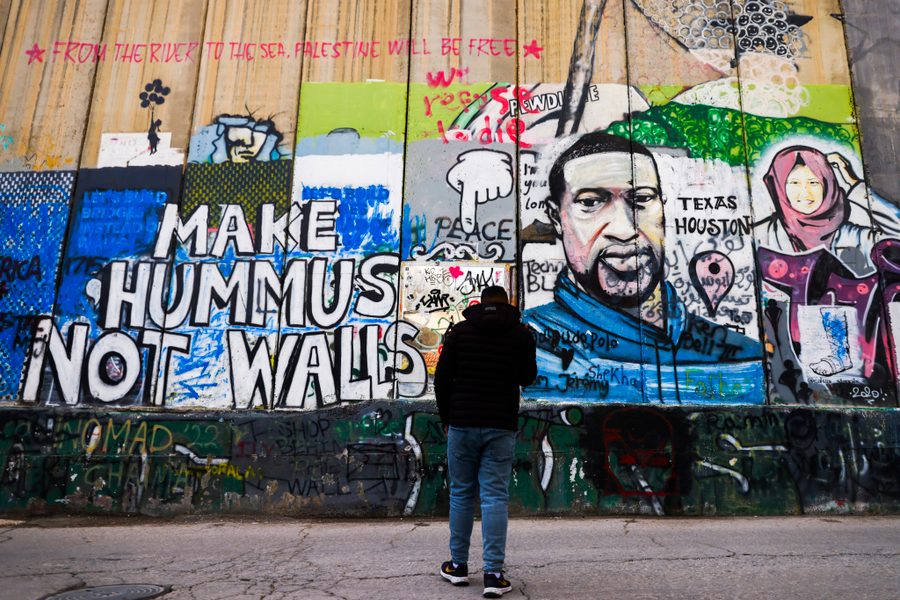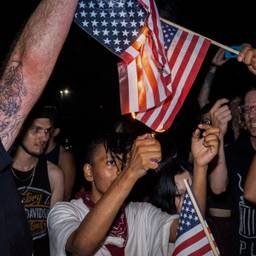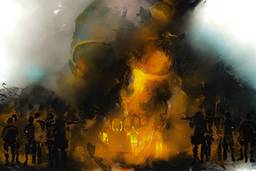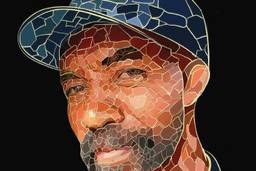The Ways We Show Up After November 5
My sights are set on lifting up art that pushes for a world with disability justice and abolition and queer liberation, a future in which Palestine and Sudan and the Congo are free.
Sherell Barbee

As the editor of In These Times’ culture section, I believe in art, music, literature, film, theater, dance and comedy. I believe these expressions of life, these gifts we give and these ways we show up for each other, can bring us closer to the future of our revolutionary dreams — or be weaponized to do the opposite.
“Culture” just means how we do things, how we determine what we deem acceptable. The black worn
to funerals in some cultures, the deceased’s favorite
color worn in others. In the United States, in the words
of poet June Jordan, our cultural norms rest on a scaffolding approved by the “smiling buyers and
sellers of African slaves.” That scaffolding
is what tells us people ought to be shackled and locked away in a cell or involuntarily hospitalized for petty crimes, like
sleeping outside or “disturbing the
peace.” It’s what legitimizes the nonconsensual turn, squat, spread ‘em and
cough, legitimizes restricting contact
with loved ones, restricting access to nutritious foods, restricting access to exercise and grass, restricting autonomy down to the bone, all for the “public good.” It’s what makes possible the present-day reality of Con Air — the “slave ship of the skies,” as rapper Gucci Mane describes it — that annually transports
more than 97,400 “prisoners and aliens” across the
United States by plane in chains, shoulder to shoulder,
for their labor.
It’s a system that endlessly justifies violence for
the profit and comfort of the ruling class, that (as
Toni Morrison wrote in 1995)
changes “citizens into taxpayers … neighbors into consumers … parenting into panicking,” that produces “the
perfect capitalist, one who is willing to kill a human
being for a product … or kill generations for control.”
What is to be done? Morrison believes that writers “can disturb the social oppression that functions like a coma on the population,” that “only writers can translate such trauma and turn sorrow into meaning, sharpening the moral imagination.” I believe her words extend to all forms of art. We must critique the norms, however small, that push us away from the future we’re striving for. We have an obligation to our communities, to our society, to create and foster a culture that reflects that better world. For In These Times readers, that means treating imagination as a terrain of struggle. As June Jordan—a friend and collaborator of Morrison’s — wrote in 2000 on the Civil Rights Movement: “[In 1965,] voting, or the right to vote, was a goal, yes, but not an overriding objective. … The overriding objective was freedom from American apartheid: its violence, its short-circuiting of our dreams, whenever and wherever we lifted our eyes to the hills, hoping to behold the full light of the opening skies.” To build a revolutionary culture is to keep our dreams intact and our eyes peeled for the break in the clouds.
My sights are set on November 6 onward, on the ways we show up for our communities after our neighborhood voting booths have been stowed into their storage units. My sights are set on the ways I can refuse to accept unfreedom. As writer Eric Stanley pens on X (formerly Twitter):
If you are feeling broken by the world hook up with your local food not bombs, organize a tent drive, do jail support for people getting out. Have a bake sale to send what you can for people fleeing genocide.
My sights are set on these everyday acts of care, and on lifting up art that pushes for a world with disability justice and abolition and queer liberation, a future in which Palestine and Sudan and the Congo are free.
For the first time in In These Times’ 48 years, we’re dedicating cover-to-cover space to cultural pieces that interrogate the ways that culture, as writer Jake Skeets puts it, “ever-evolves, is always moving and in constant flux” — the ways we can shape that churn of possibility.
Sherell Barbee is the print editor at In These Times where she also curates the culture section. Her previous editorial work includes the Missouri Review, Pleiades magazine, Speilburg Literary Agency and 826 Boston. She was a 2021 residence fellow at the Massachusetts Museum of Contemporary Art.










